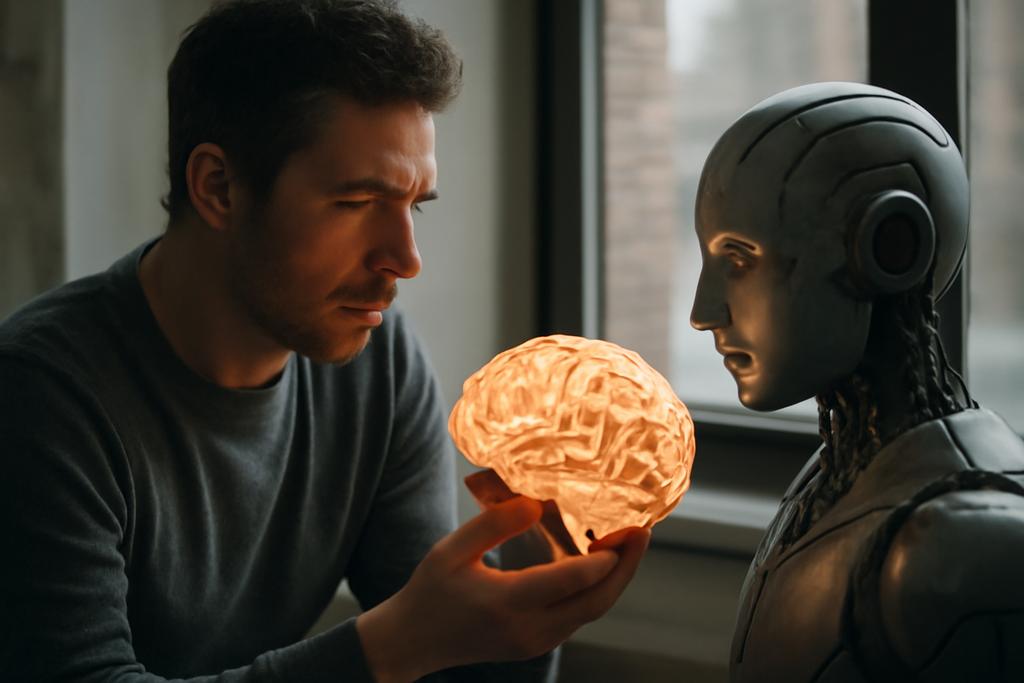For years, artificial intelligence has struggled with something humans do effortlessly: combining familiar concepts in novel ways. Think of understanding “jump twice” based on knowing “jump” and “twice.” This “compositional generalization” is a hallmark of human intelligence, but AI has lagged behind, often exhibiting impressive performance on specific tasks yet failing miserably when faced with slightly altered situations. A groundbreaking study from Cornell University, led by researchers Alex Noviello, Claas Beger, and their colleagues, offers a potential solution, drawing inspiration from the very architecture of our own brains.
A Two-System Approach: Mimicking the Brain’s Elegance
The researchers’ approach, dubbed MIRAGE (Meta-Inference with Rules and Abstractions from Generalized Experience), takes its cues from the human brain’s elegant dual-processing system. Our brains don’t rely on a single, monolithic system for thought; instead, we use two main processing modes: a fast, intuitive, pattern-recognition system (akin to gut feeling), and a slower, more deliberate, rule-based system for deeper reasoning and planning. These systems — often referred to as System 1 and System 2 in cognitive science — interact dynamically, complementing each other’s strengths.
MIRAGE cleverly replicates this architecture. One module, the “Neural Decomposer,” mirrors System 1, using a transformer network (a popular AI architecture) to quickly identify patterns and relationships in information. Another module, the “Schema Engine,” embodies System 2, extracting reusable rules or “schemas” from previous experiences. These schemas are essentially mental shortcuts, enabling the system to tackle new problems by recombining familiar elements in new ways.
The beauty of MIRAGE lies in the interplay between these two systems. The Schema Engine guides the Neural Decomposer, providing context and higher-level instructions. The decomposer, in turn, processes information and feeds the results back to the schema engine, refining the understanding and allowing for more nuanced reasoning. This iterative process is crucial; it’s not a one-and-done solution but a dynamic dance between intuition and deliberate thought.
Beyond Benchmarks: A New Era of AI Generalization?
The researchers tested MIRAGE on the SCAN benchmark, a notoriously difficult test of compositional generalization. The results are startling. MIRAGE achieved over 99% accuracy across all parts of the benchmark. This surpasses previous AI approaches, which often showed strong performance on specific types of tasks within the benchmark but struggled to generalize their knowledge to slightly different variations of the same tasks. It’s like teaching a child addition: they might master 2 + 2 = 4, but struggle with 12 + 12. MIRAGE, however, demonstrates a level of flexibility and adaptation that mimics human cognitive abilities.
Importantly, this success isn’t limited to the SCAN benchmark alone. MIRAGE’s architecture is designed to generalize to new tasks. Given a clear description of a new task (in the form of a set of rules), the model can adapt and perform it effectively, something that’s previously been a major challenge in AI. This adaptability suggests a significant leap towards more general-purpose AI.
The Importance of Explicit Rules and Iterative Refinement
Several key aspects of MIRAGE’s design proved crucial for its success. First, the explicit prioritization of rules. Just as we follow the order of operations in mathematics (PEMDAS), MIRAGE uses explicit priority cues to resolve conflicts between multiple schemas. This careful ordering ensures consistent and reliable results, preventing the system from getting confused when several rules could apply.
Second, the iterative refinement process. Rather than attempting to solve a complex problem in one giant leap, MIRAGE breaks it down into smaller, manageable steps. Each step refines the understanding, gradually building towards a complete solution. This gradual process mirrors human problem-solving, where we rarely arrive at the answer instantly but rather refine our approach through multiple iterations.
Implications and Future Directions
The implications of this work are substantial. MIRAGE’s success suggests a new path towards building more human-like AI, capable of genuine reasoning and problem-solving. This could revolutionize fields like natural language processing, robotics, and scientific discovery, enabling AI systems to perform tasks that require flexible adaptation and generalization.
The researchers plan to integrate MIRAGE into larger AI systems, potentially enhancing the reasoning capabilities of large language models. This could lead to AI that’s not only more powerful but also more transparent and explainable. By explicitly representing rules and schemas, MIRAGE makes the reasoning process more readily understandable, paving the way for more auditable and trustworthy AI systems.
This research represents a significant advancement in AI. By combining neuroscientific insights with innovative AI techniques, Cornell University’s researchers have developed a model that can generalize in ways previously thought impossible. The future of AI may be less about building ever-larger models and more about understanding the fundamental principles of human intelligence and incorporating them into our AI designs.










